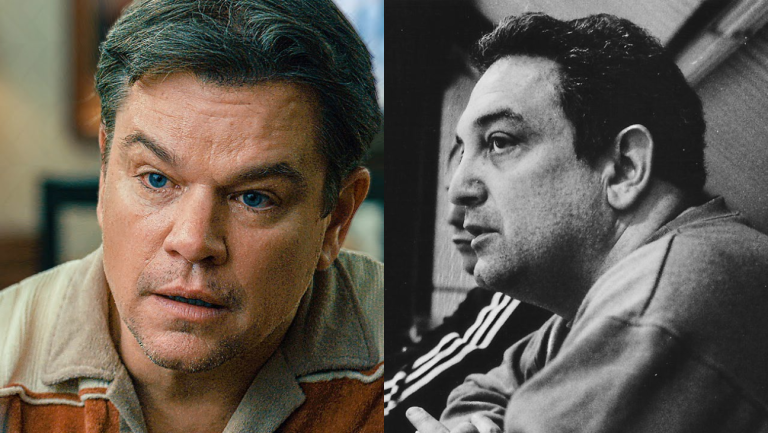Too little can be anticipated from a film that sets for itself the humongous task of depicting unfettered human impulses. The 1966 Danish film Hunger (adapted from Knut Hamsun’s critically acclaimed novel of the same name), presents its audience with nothing more than a series of disjunct vignettes, to set sail for a frantic exploration of the lesser-known crevices of life.
Following the misadventures of a strange man as he wanders around the streets of a strange city, what we can safely discern as facts are that he is a writer, and he is starving. And that is about it. His very demeanor is mercurial. His actions do not necessarily have a meaning or purpose. In fact, they further threaten his survival. The unsettled viewer is often moved to grab him by the shoulders and talk some sense into him so that he lives a little longer. Neither do we know where he’s come from, where he’s going, or why he is in such a quagmire. Eventually, we cease to view the protagonist as a person, but rather as a nebulous state of existence.
Similar to Hunger (1966): I am Cuba (1964) – When Propaganda Becomes Poetic
In his essay ‘The Death of The Author’, the French philosopher Roland Barthes posits the negation of the domineering presence of the author figure in modern literature. He further develops the idea, saying that over the years, there has been a shift in the perception of a literary work as being the brainchild of the author, to just a circumstantial play of language. Consequently, the necessity of deciphering with analytical precision what the author is trying to say has also dissolved. What has taken birth can, perhaps, be best described as a raw and dynamic form of art, which is shaped not only by its creator but also by its experiencer.
It is widely believed that Hamsun’s nineteenth-century novel is the harbinger of such modern ideas. When it comes to the film, it surely stands its own ground as well and the ethos seems to be intact. We never learn the (real) name of the protagonist, or of any other character. They are either a policeman, a landlady, or a pawnbroker—merely a manifestation of their designated roles. A love interest is baptized with a random word, the first word that comes to the mind of the protagonist on seeing the person. But this barely qualifies as an act of asserting identity. This can at best be seen as a heartfelt response to an intimate sensation that arises within the man in her presence, not much different from the act of kissing back on being kissed.
And then, there is the paradox of the protagonist himself, a writer who is desperately incapable of writing, but who is also the narrator of the film. He lives in the hope of writing something brilliant but never actually does it, which results in his starvation to the brink of death. It is also indicated that he does not have to suffer thus, as he can always choose to leave the city in search of sustenance. Thus, throughout the film, his relationship with hunger remains obscure. His hunger is more than just an occupational hazard or mere twists and turns of fate. Equally obscure remains his religious inclinations, and his social interactions consist of mostly nonsensical, impulsive discourses. This utter alienation of the narrator from the narration, which is at the heart of twentieth-century modernism, essentially acts as a mirror that reflects the undulations of the viewer’s own psyche.
One can devour the film in the hope of witnessing the salvation of the protagonist. But a viewing interspersed with parallel readings from the text can enable one to fully appreciate the maturity with which the novel to screen transition has been maneuvered. The narrative sequence has been played around with quite frequently. Dream sequences, which stand out in their poignancy, have been given ample screentime to sculpt the bridges to the subconscious landscape, where there is a complete sensory liberation, where longings are awash with colors, where man is not man but a sum total of his caprices. Add to these the inconsistencies in the background score, and there we have the temperamental portrait of the protagonist.
Also Read: The Birds: What Hitchcock’s 1963 Classic Really Means?
This riveting tale of a man’s subjugation to forces beyond his control is not a sociological diatribe. This is the story of a man’s journey to find in himself a sanctuary of pristine, unshakeable faith—a faith without an object or a motive—in the motif of a greater society that largely fails to accommodate such individuality. Such an inwardness is not rare to come across. One is reminded of the French existentialist Jean-Paul Sartre, as he writes in his 1938 novel, Nausea— “I am alone in the midst of these happy, reasonable voices.”. This stark contrast between Man as an individual and Man as a collective has always been a subtle yet central theme of art. The ever-present battle between the needs of the flesh against the needs of the human spirit has also been extensively addressed in the works of the German author, Herman Hesse. In his book Demian, he writes— “In each individual, the spirit has become flesh, in each man the creation suffers, within each one a redeemer is nailed to the cross.”
It is fascinating how these universal themes are so abstract yet so timeless. The relevance of certain works of art spans across generations. If one is to look around oneself at any point in time, he will certainly be able to see the ravages of the omnipresent hunger—a starvation of the soul of modern society.


![Minari [2021] Review – A breathtaking effort on family and resilience](https://79468c92.delivery.rocketcdn.me/wp-content/uploads/2021/04/Minari-Movie-1-768x432.jpg)
![Ankhon Dekhi [2013]: Believe in what you live](https://79468c92.delivery.rocketcdn.me/wp-content/uploads/2018/03/image.png)



![The Parting Glass [2019] Review – An Intimate Family Drama driven by it’s Theatrical Value](https://79468c92.delivery.rocketcdn.me/wp-content/uploads/2019/10/The-Parting-Glass-highonfilms-768x412.jpg)